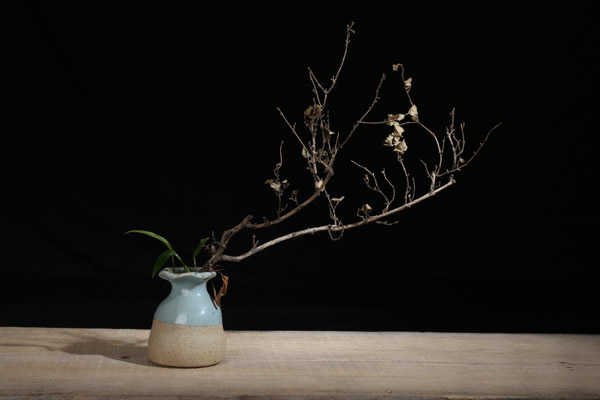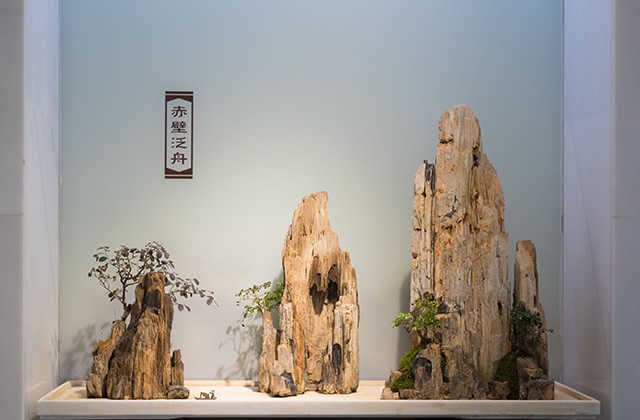How to shape the bonsai 5 major styling skills
1. Dry
There is only one main trunk in the bonsai trees, and the backbone attitude is basically upright or slightly bent, that is, those with the so -called straight apartment are called straight drying.The best performance of the straight bonsai trees requires the best performance of the roots must be a thick roots that are stretched around in all directions, making the trees look solemn and stable, and there is a momentum of the sky.The branches are stretched around, with rich Levels and powerful branches.The branches should be at about 1/3 or 2/3 of the trunk, and branches should not be produced. Do not have too many branches and leaves to avoid blocking the main trunk.Let the main trunk be exposed to show the standing and vigorousness of the pot trees.The Flower pots should be shallow, and the planting location depends on the shape of the tree. Note that there should be an asymmetric balance between the trees.If the crown is a waist triangle, the planting location is livable after the livability; the crown is slightly not waiting for the border triangle, and the planting location should be slightly biased on the short side of the triangle.

The bonsai of straight -drying trees should be made into high -shaped "straight" pictures, and the branches should be short.The tree species that are suitable for showing straight works include black pine, five -pin pine, money pine, Mizuki, ginkgo, elm tree and so on.Most of these materials are taken from forest farm, and some are dug from mountains.
Gardening Knowledge Lecture Hall & GT; & GT;
Two.
The dried bonsai trees require a certain degree of bending changes, but there should be no more songs, and one or two bending is enough.Avoid repeating too much monotonous, otherwise there will be traces of artificial work.Qu Gui is living, and the changes in the main lines are rigid, rigid and soft, and the lines are both Smooth and straightforward.
The changes of the sang materials of Shan Cai are unpredictable, vigorous and natural, and are very valuable, but there are also unsatisfactory line changes. Pay attention to the choice.
The artificially cultivated dry material must be slightly oblique during planting, so that the roots of the other side can be cultivated into a thick strong root and semi -exposed to the soil surface.The feeling of coordination.This is the main ornamental part of the Qugan trees bonsai, which must be attached very important.
For the main base of the backbone, you can shorten it by cutting, so that the main trunks can choose the development direction separately.In the future, you can also use the method of cutting and tie to cultivate the main trunk until the requirements of the bonsai beauty.
Cyllaria is the most typical curv -style bonsai material.Others such as pine trees and some miscellaneous trees are also suitable for composing dry bonsai.
3. Candid -drying
The trunk of the trees in nature is caused by factors such as wind blowing or mountain landslides, landslides and other factors.Therefore, the changes in the tilt of the trees are also very complicated, but one thing is that its main lines are not a straight line, but various deformations in the shape of "S".This attitude of tilting the trunk in nature is reflected in the bonsai of the trees, and we call it oblique dry type.The trunk of the oblique bonsai material must have various deformations of the "S" shape.If the main trunk is leaning, there should be thick roots on the left side, and the main stem tips turn upwards, which is like the oblique dry bonsai material that has been inclined for many years.If the trunk is tilted and the main lines are straight, there is a lack of charm and does not conform to the laws of nature.Because there are no strong winds in the world, and trees always continue to grow up.
The main point of making oblique dry trees bonsai is how to make the trees focus without losing their focus.The methods are: the role of the rough roots in the opposite direction, the role of branches in the opposite direction, and the tilt -tilt big branches, giving people a sense of support.
In order to strengthen the tilt of the pot trees and make the composition active, it is advisable to use a round shallow basin, a Square shallow basin or a semi -height round basin to make the tilt trunk or branches out of the pot.
Pine cypress trees and some miscellaneous trees are suitable for oblique dry bonsai materials.
4. Cliff style
On the cliffs of nature, some trees are often growing in various attitudes, and the thrilling and lush is still lush.The trees of this attitude are reflected in the bonsai.
Cliff types generally include semi -suspension, full suspension and upside down.
Half -suspension: The whole plant of the bonsai is out of the basin, and the sky is born, but the tree body is not lower than the pot surface.It may be the trunk crossing, or it may be thicker and thicker because the trunk is short, so as to get the momentum.
Full suspension: The whole plant of the bonsai is out of the basin, and it stretches down and the branches are across.
Inside the inverted type: The whole plant of the bonsai is out of the basin, the exposed trunk is Hanging vertically, and the branches are still horizontal.
The production of cliff -type bonsai focuses on the selection of materials, and requires a certain curvature change at the base of the material of the material, so that the trunk or big branches can cross or sag.Although the cliff -like bonsai is attractive, it must not be considered according to the conditions of the material.
Cliff -type bonsai was planted in the past to set up the momentum formed by the decline of trees from a height.Now use half -high Square pots or round pots to plant, and then use a few heights to cause cliff momentum when the exhibition is arranged.The advantage of it is that it can improve the cultivation and management of trees because the high -dry Tube is too deep; it can make scenery, pots, and shelves in view of viewing, and show vividly, so that the picture is transparent and coordinated.
5. Double dry
The double -dry trees bonsai appears in the form of two trees in the form, which reflects the artistic beauty of humility, echoing, denseness, and reality between the two trees.realm.
The production of double -dry bonsai must pay attention to the following points.
Two materials for selected materials must be divided into the main and secondary.The main tree is tall, and the second tree should be shorter.
The posture is mainly based on the main tree. The changes in the backbone of the second tree should be generally similar to or close to the posture of the main tree's main trunk to form a certain tacit understanding.If the gesture of the two trees has different changes in the posture, it is difficult to produce the beauty of coordination, and it should be avoided.
There must be two trees in planting.Whoever depends on the specific situation.When planting, the main base of the two trees should be approached, and the roots of the tree should be basically consistent, and they must not be their own.The angle of the stretching direction of the two trees should not be too large, generally ideal within 45 angle.If it is too large, the trunk of the two trees may lose their echoes and hope.
The branches and strips are relatively complicated by the two -dry branches and adjustments. The two trees should be treated as a unified overall treatment to achieve the overall balance, stability, reality and coordination, and orderly.
The large branches of the two trees should be stretched outward, and the coarse branches should be cut off between the double stems to avoid cross -branches and the main trunks.The branches between the double stems should be filled by the branches on the front and the rear side to avoid straight and straight, so as to be the most natural.
In addition, the branches of the main tree should be high.
Double -drying can also be two different tree species, but the best cooperation is still a tree species.
The double -drying type is the co -planting of two trees. It can also be merged into a double -dry form, collectively referred to as double -dry type.Because from the perspective of styling, their trunk processing is the same as branches.A double -drying may be the original, and it is divided into two due to external forces.The height, thickness, straightness, and hiding changes of the two main trunks meet the performance requirements of bonsai art.Sari is also a heavenly success, and it is slightly decorated with rot.God branches are indispensable, but artificially.The two water lines are wide and the outside of the dry, which is the most ideal.The crown is closely combined by two crowns, and its power is unified.The whole tree is suitable for static, compact structure, and the beauty of stability, quietness, unity, and harmony.


